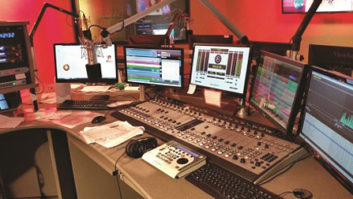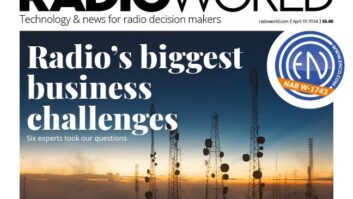Open Mic: Martin Stabbert
Nov 1, 2007 12:00 PM
When the FCC Rules allowed AM stations to transmit IBOC signals at night, concerns were raised about the potential interference that would result to all analog stations in AM band. In the end, there hasn’t been the doom and gloom destruction of AM radio from nighttime IBOC use, and Radio magazine research has found mixed experiences relating to actual received interference.
Within days after Sept. 14, the day AM stations were allowed to transmit IBOC at night, Citadel Broadcasting Director of Corporate Engineering Martin Stabbert issued a memo to Citadel’s AM IBOC stations that transmitted a signal at night. The memo instructed stations to cease nighttime transmissions because of interference issues. We talked to Stabbert about the memo and the interference problem to help set the record straight.
Radio: What kind of interference was experienced?

MS: The interference appears to have been caused by the skywave signals interfering with the ground wave signals. Everyone expected to experience some skywave-to-skywave interference, but not the ground aspect.
Radio: How did the interference manifest itself?
MS: There was an elevated noise floor, and I understand that at its worst, the interference would obliterate reception of the desired station. This is based on reports I received from the field. A substantially elevated noise floor is cause for concern.
Radio: How many stations experienced the interference?
MS: Citadel had 10 AM stations transmitting IBOC at night. Five of them experienced some type of interference. We had no complaints from the other five. It wasn’t universal. It seemed to center around the high-power Class A stations. We have a couple of Class C and lass B stations that were running IBOC at night, and they had no interference.
Radio: Were the Class A stations the cause or the recipient of the interference?
MS: Both. This is not intended to be a criticism of the technology or the proponent of the technology. This is a case of us turning it on and having some results that we want to take a look at.
Radio: When will you complete the evaluation with Ibiquity?
MS: I had hoped to have something set up in the next 30 to 45 days, but I don’t have anything definitive from Ibiquity yet.
Radio: How does Citadel decide which markets should be upgraded for HD Radio?
MS: Clearly there is a bigger push for the major markets. For AMs, we then look at a combination of the market size, the status of the station in the market and the facility condition [ease of conversion, age of equipment]. Stations slated for equipment upgrade are considered for an HD Radio upgrade when appropriate. It’s a combination of factors.
FM has similar considerations, but we also consider building space, tower capacity, power capacity and other specific factors.
Citadel has 16 AM stations that can transmit HD Radio signals. Only 10 were operating at night. Six more AM stations are in the process of converting to HD Radio operation, which should be completed by the end of 2007. Until the AM nighttime interference issue can be resolved, all the Citadel AMs are limiting their IBOC operation to daytime only.












